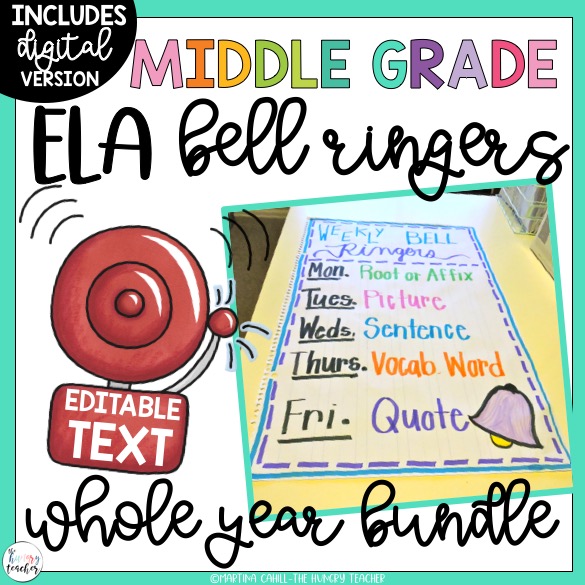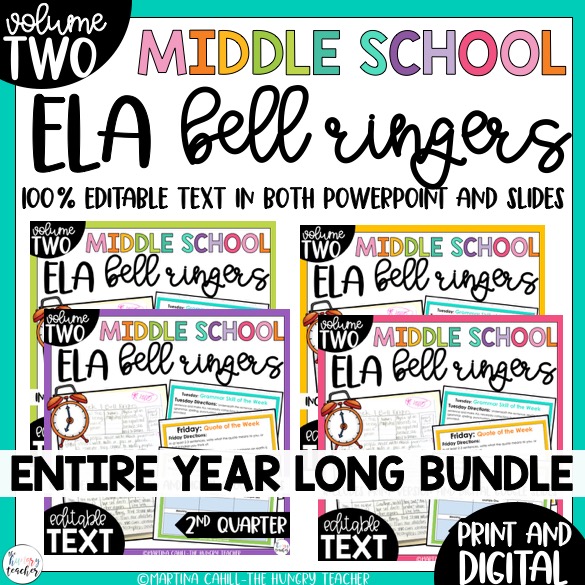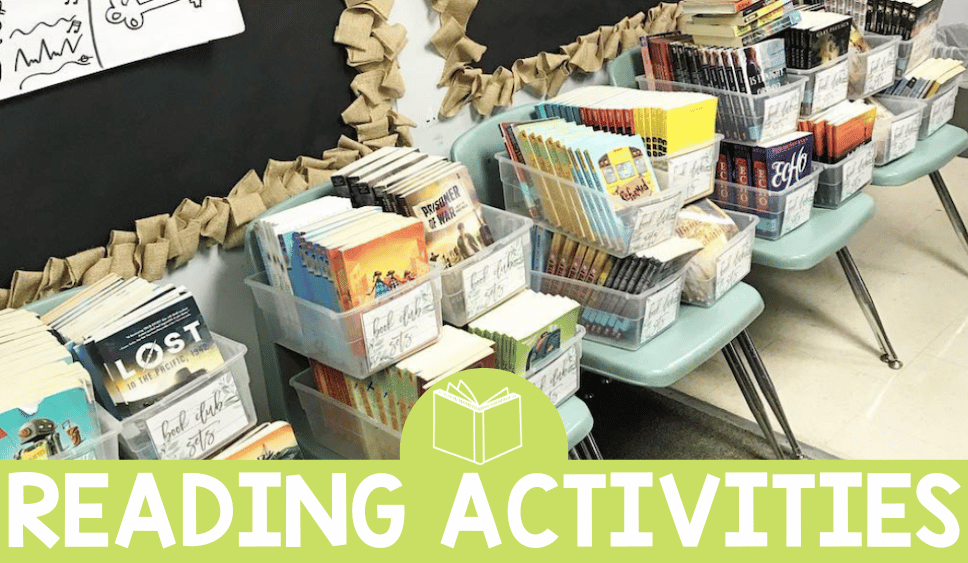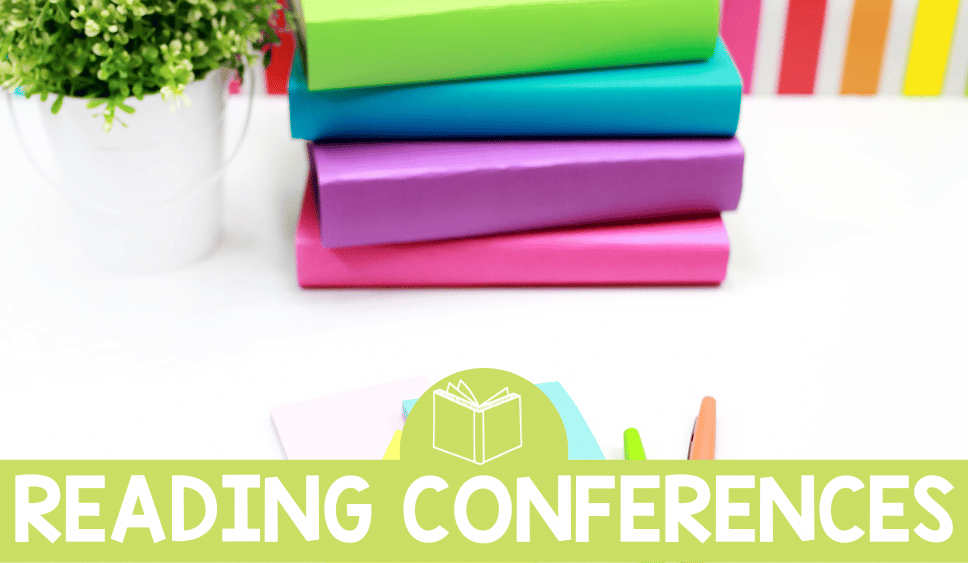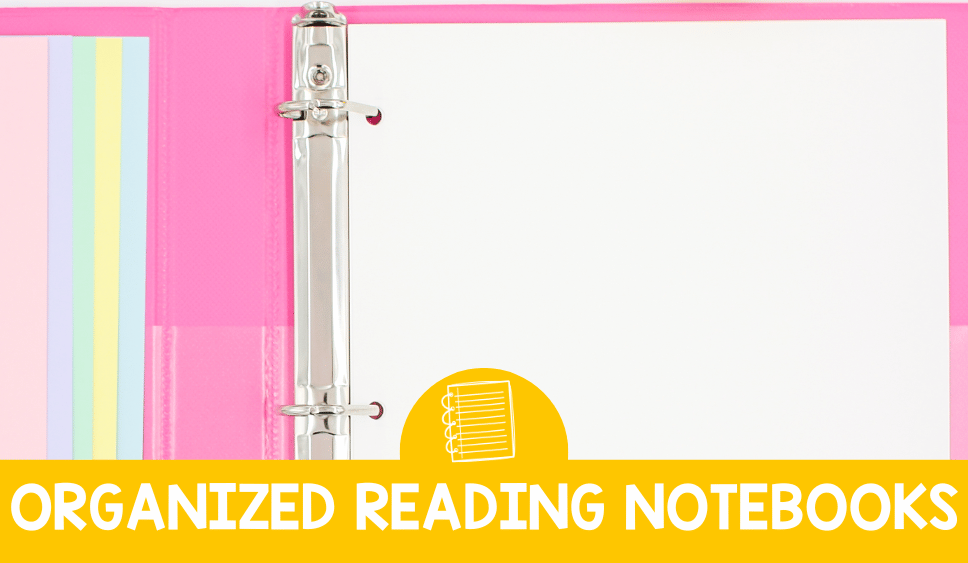
Guided Reading and Small Groups in Middle School PART III: ELA Curriculum Lessons and Novel Units
This middle school and upper elementary small group and guided reading ELA curriculum blog post is part of a three part series. This is part three of three blog posts all about how I implemented guided reading and small groups in my middle school classrooms. Click on any of the links to be taken to each of the posts in the series:
- One: Guided Reading and Small Group
- Two: Student Routines, Daily 5, and More
- Three: Small Group Alongside Curriculum and Whole Group
CLICK HERE to get my Middle School Guided Reading Recording Sheets sent straight to your inbox.
get free middle school guided reading forms sent
to your inbox
Subscribe to The Hungry Teacher and get five of my middle school guided reading forms sent straight to your inbox. You’ll also get access to all of my exclusive freebies and ELA curriculum teaching ideas.
MY ELA ROUTINE-TWICE A DAY
- 10 min: ELA Bell Ringer
- 30 min: Collections (my ELA curriculum) Lesson
- 20 min: Round 1 (small group and Daily 5)
- 25 min: Novel Lesson- Reading (10 min), Socratic Seminar (7 min), Reading Response (8 min).
- 20 min: Round 2 (small group and Daily 5)

Why is my ELA block broken up like this?
Using the ideals of The Daily 5, I wanted my ELA curriculum lessons broken up and my workshop time broken up.
Sixth graders are no better inclined to sit for extensive amounts of time than any other grade. I wish my ELA curriculum lessons were even shorter sometimes, but in general, I work hard to keep them engaged and moving when I can.
The following section will outline what I do each class period.
ELA BELL RINGERS FOR ROUTINES
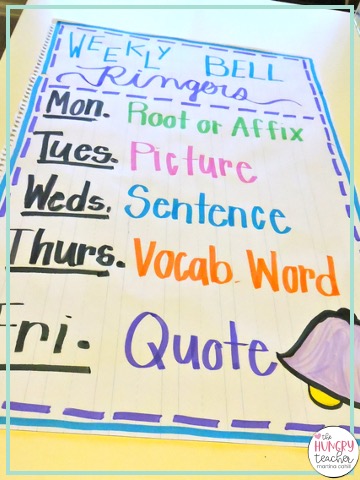
I have talked about bell ringers probably a million times. Here is a blog post all about how they changed my life. When I made them, my classroom routines and ELA curriculum were a mess and I was desperate for my ELA blocks to start out way better than they were.
I swear I am not product pushing when I say these bell ringers are the best thing I ever did. They are simple, routine-driven, and engaging.
My classes have been PERFECT ever since I started these.
My routines and procedures blog post talks more about bell ringers, and you can always try them free for three weeks:
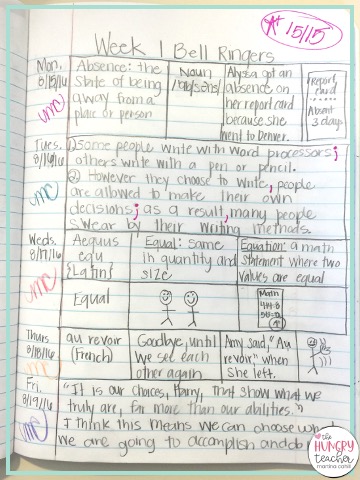
TEACHING CURRICULUM WITH SMALL GROUPS
I have had to teach a bunch of different types of curriculums and my schedules reflect that. This was my schedule from sixth grade ELA.
DAY ONE
- Review the performance task and the ELA curriculum Collections vocabulary (see below). We talk about what they will be expected to do at the end (usually a writing analysis, media presentation, group presentation, or research/argumentative paper).
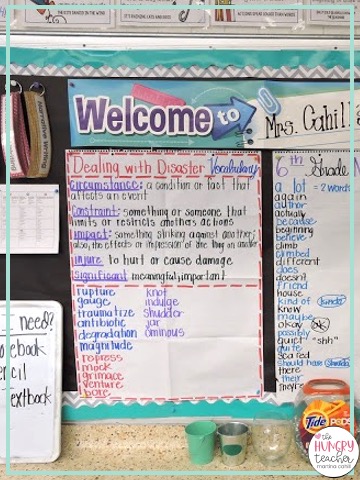
- Watch an applicable video if available: There is usually an engaging introduction video for us to watch (i.e. our Collections now is about Disasters, so we watched a tsunami video).
- The chart paper stays up for the whole Collection. The vocabulary on top is for the whole Collection. The multicolored ones on bottom are from our stories and we define those in our reading notebooks.
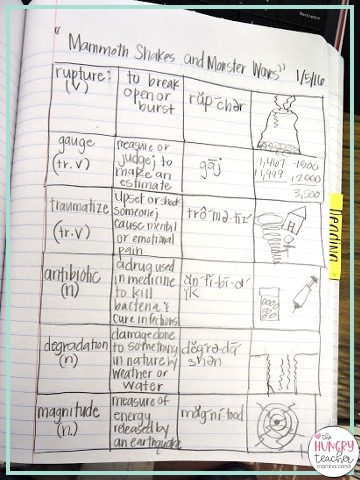
DAY TWO
Story one vocabulary: We use the organizational structure below and we write, define, syllabify, and illustrate each word for the story before we read each one. They end up looking like the image to the left and we reference them throughout the whole story. They also always ace their vocabulary tests :).
DAY THREE
Introduce the Demonstration of Learning/Essential question. I tell the students what I want them to be looking for or thinking about while we are reading.
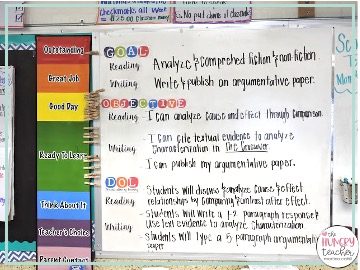
For example: What was the cause and three effects, using textual evidence, of the tsunami in the story?
I used to hate writing them on the board, but now I see the benefits. I mostly just have to change my Demonstration of Learning each day. These are included in my ELA curriculum.
Listen to the audio of the story. I LOVE this. I ALWAYS read our novels, but I was getting so worn out reading the textbook and the novels for both of my classes. It’s so nice that they have audio for all of our stories. I just play it, andpause to talk about vocabulary and about evidence of the essential question. The best part about all of this is that I can read all the teacher notes on the side of the text, while the audio reads the story.
SOCRATIC SEMINAR
Demonstration of Learning Socratic Seminar: Basically we have a class discussion about the questions, I chart their responses on the board (example here), and then students write their answer in their notebooks.
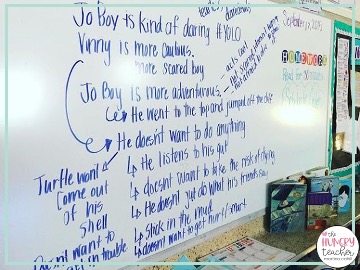
The board is to help students write strong responses by utilizing each other’s thinking. It’s basically a BIG collaborative discussion. I LOVE the Socratic Seminar and use it for everything.
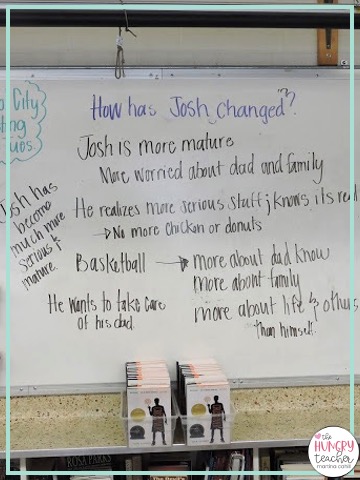
DAY FOUR
- Demonstration of Learning and Essential Questions
- Listen to Audio
- Socratic Seminar
- Demonstration of Learning writing response
DAY FIVE
- Demonstration of Learning and Essential Questions
- Listen to Audio – Finish the story. They typically take me 3-4 days to finish reading each story.
- Socratic Seminar
- Analyzing the text questions: There are typically 5 questions at the end that we discuss and or write/type about.
DAY SIX
Comprehension and vocabulary test. Most of my students do REALLY well on these because we work on the story and vocabulary for 3-4 days.
DAY SEVEN
Performance task (usually a writing analysis, media presentation, group presentation, or research/argumentative paper).
Then we go to the next story and start all over with the process. The time frame can change, (i.e. poems, teachable moments :), shorter/longer stories, and tougher performance tasks).
NOVEL STUDIES
If you follow me and my teaching journey, you know I LOVE teaching with novels. At my previous school, I only used novels. I don’t have that freedom anymore, but I still use them as my second lesson of the day.
- This is how my Novel Study Lesson section of the day goes: Introduce Essential/Guiding questions
- Read the day’s chapters (10-15 minutes).
- Essential/Guiding question Socratic Seminar (7-8 minutes). Example above from The Crossover.
- Writing response in reading notebooks.
This middle school and upper elementary small group and guided reading blog post is part of a three part series. This is part three of three blog posts all about how I implemented guided reading and small groups in my middle school classrooms. Click on any of the links to be taken to each of the posts in the series:
- One: Guided Reading and Small Group
- Two: Student Routines, Daily 5, and More
- Three: Small Group Alongside Curriculum and Whole Group
CLICK HERE to get my Middle School Guided Reading Recording Sheets sent straight to your inbox.
get free middle school guided reading forms sent
to your inbox
Subscribe to The Hungry Teacher and get five of my middle school guided reading forms sent straight to your inbox. You’ll also get access to all of my exclusive freebies and teaching ideas.
Share it:
- Read more about: Middle School Guided Reading, Middle School Reading, Organization


